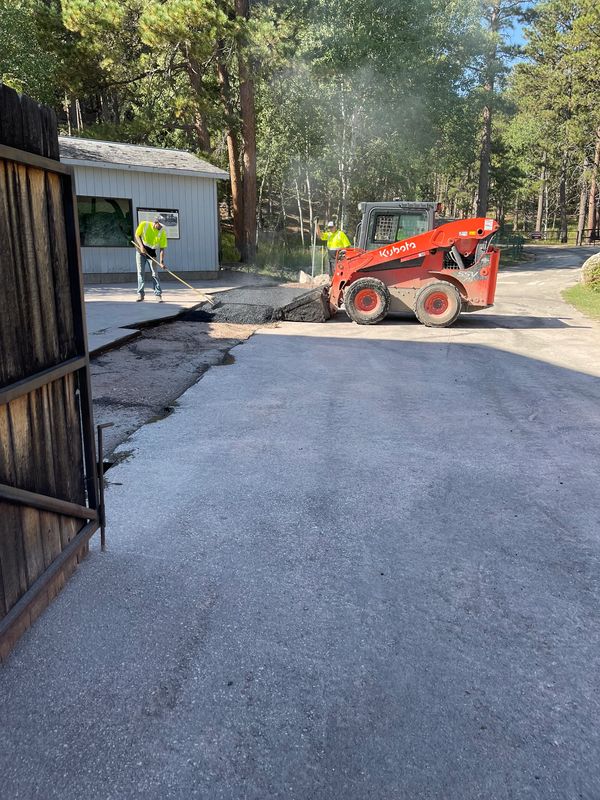Hot Mix Asphalt: A Sustainable Option for Sidewalk
Warm Mix Asphalt (HMA) has actually become a leading lasting selection for pavement services, offering a myriad of environmental advantages and ingenious technologies. Its ability to recycle materials and minimize power intake offers an engaging situation for its adoption in roadway construction jobs. Furthermore, the long-lasting efficiency and sturdiness of HMA make it a preferred option for infrastructure development. As the need for environment-friendly building and construction practices expands, discovering the nuances of HMA's sustainability can give valuable insights into the future of sidewalk services.
Environmental Advantages of Warm Mix Asphalt

Moreover, Warm Mix Asphalt assists to mitigate city warmth island effects. Its dark shade takes in sunshine, minimizing the amount of warm reflected back right into the ambience contrasted to lighter-colored pavements. This can reduce ambient temperatures in metropolitan areas, lowering the need for cooling and eventually reducing energy consumption.
Furthermore, Hot Mix Asphalt adds to improved stormwater monitoring. Its permeable nature permits water to penetrate the sidewalk and recharge groundwater products, minimizing runoff and the threat of flooding. These environmental advantages make Hot Mix Asphalt a sustainable option for leading roads and freeways.
Power Performance in HMA Production
Is power performance a critical variable in the production of Hot Mix Asphalt (HMA)? Energy plays a considerable role in the manufacturing of HMA, affecting both expense and environmental sustainability. One key facet of energy efficiency in HMA manufacturing is the use of cozy mix asphalt (WMA) modern technologies.
Additionally, innovations in plant innovations have actually led to even more energy-efficient HMA production processes. By maximizing energy usage in HMA manufacturing, the sector can decrease its carbon footprint while keeping top quality pavement products.
Recyclability of Warm Mix Asphalt
The recyclability of Hot Mix Asphalt (HMA) is a critical facet of its sustainability and long-term environmental influence. HMA is one of the most recycled products in the United States, with over 100 million heaps of reclaimed asphalt sidewalk (RAP) being recycled each year in new pavement building. Reusing HMA offers a number of ecological advantages, such as decreasing the requirement for virgin products, decreasing power usage during production, and reducing the quantity of waste sent out to land fills.
The process of reusing HMA includes grating the existing pavement, crushing it right into smaller items, and blending it with new accumulation and asphalt binder to develop a recycled mix. In general, the recyclability of HMA plays a significant role in advertising sustainable practices within the sidewalk market.

Long-Term Performance of HMA
Asphalt sidewalks demonstrate longevity and resilience over an extended period, reflecting the long-term performance of Hot Mix Asphalt (HMA) The longevity of HMA can be credited to its ability to withstand rush hour loads, harsh climate condition, and the effects of aging. Research studies have shown that properly designed and effectively created HMA sidewalks can last for twenty years or more with regular maintenance. The trick to making the most of the long-term efficiency of HMA hinges on basics utilizing top notch materials, following best methods in building and construction, and executing reliable maintenance techniques. Appropriate drainage, routine inspections, and prompt fixings are essential for maintaining the architectural stability of HMA pavements with time. Furthermore, advancements in HMA modern technology, such as using polymer-modified binders and warm mix asphalt, have actually additionally enhanced the longevity and durability of HMA pavements. By focusing on quality building and best site construction and maintenance techniques, HMA remains to prove itself as a lasting and affordable solution for resilient sidewalk facilities.

HMA: Longevity and Sustainability
Showing both sturdiness and sustainability, Warm Mix Asphalt (HMA) has actually become a keystone in the construction of lasting sidewalk facilities - hot mix asphalt. HMA's toughness comes from its capacity to endure hefty loads, go to my site rough climate condition, and high traffic quantities, making it a dependable selection for roadways, highways, and airport terminal runways. The structure of HMA, which commonly consists of accumulations, binder, and filler, plays an important duty in improving its long life and resistance to tear and use
In addition, HMA's sustainability lies in its recyclability and energy-efficient production procedure. The capacity to reuse recovered asphalt sidewalk (RAP) in brand-new HMA mixtures decreases the need for virgin products and minimizes the environmental effect of sidewalk building and construction and maintenance. Furthermore, the power performance of generating HMA lies in its lower mixing temperature levels contrasted to various other sidewalk materials, resulting in decreased power usage and greenhouse gas exhausts.
Verdict
In final thought, hot mix asphalt (HMA) supplies a lasting option for pavement with its environmentally friendly features. HMA's recyclability, energy performance in production, and long-term durability make it a green option for road building and construction.
HMA is one of the most recycled products in the United States, with over 100 million lots of reclaimed asphalt sidewalk (RAP) being reused each year in brand-new pavement building and construction.The process of reusing HMA includes crushing the existing sidewalk, crushing it into smaller sized pieces, and mixing it with brand-new aggregate and asphalt binder to develop a recycled mix.Asphalt pavements show longevity and durability over an extensive period, mirroring the long-lasting efficiency of Hot Mix Asphalt (HMA) In addition, developments in HMA modern technology, such as the use of polymer-modified binders and cozy mix asphalt, have additionally enhanced the toughness and longevity of HMA pavements. The capacity to reuse recovered asphalt sidewalk (RAP) in new HMA blends reduces the demand for virgin products and minimizes the environmental influence of pavement building and upkeep.